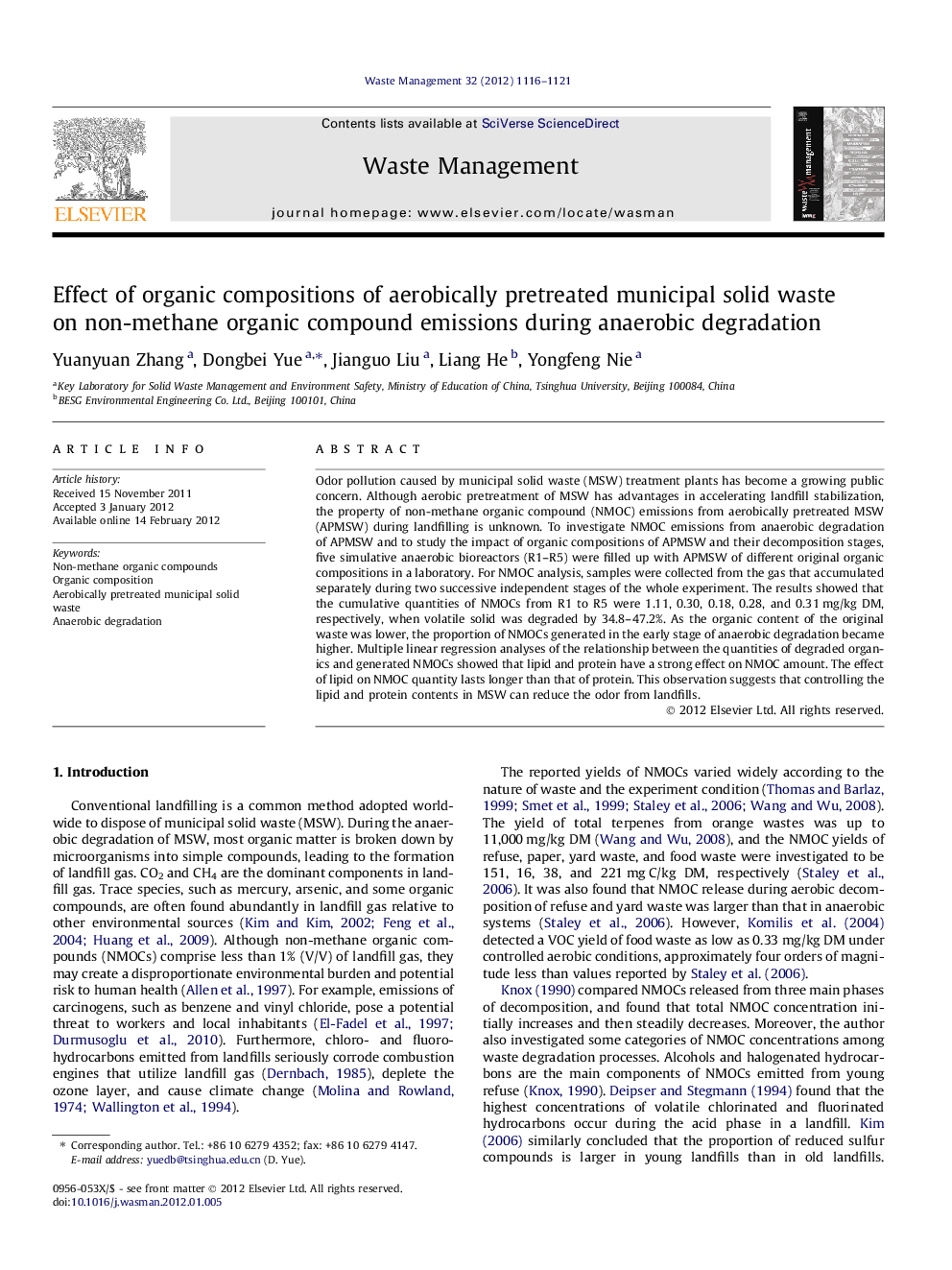| Article ID | Journal | Published Year | Pages | File Type |
|---|---|---|---|---|
| 4471797 | Waste Management | 2012 | 6 Pages |
Odor pollution caused by municipal solid waste (MSW) treatment plants has become a growing public concern. Although aerobic pretreatment of MSW has advantages in accelerating landfill stabilization, the property of non-methane organic compound (NMOC) emissions from aerobically pretreated MSW (APMSW) during landfilling is unknown. To investigate NMOC emissions from anaerobic degradation of APMSW and to study the impact of organic compositions of APMSW and their decomposition stages, five simulative anaerobic bioreactors (R1–R5) were filled up with APMSW of different original organic compositions in a laboratory. For NMOC analysis, samples were collected from the gas that accumulated separately during two successive independent stages of the whole experiment. The results showed that the cumulative quantities of NMOCs from R1 to R5 were 1.11, 0.30, 0.18, 0.28, and 0.31 mg/kg DM, respectively, when volatile solid was degraded by 34.8–47.2%. As the organic content of the original waste was lower, the proportion of NMOCs generated in the early stage of anaerobic degradation became higher. Multiple linear regression analyses of the relationship between the quantities of degraded organics and generated NMOCs showed that lipid and protein have a strong effect on NMOC amount. The effect of lipid on NMOC quantity lasts longer than that of protein. This observation suggests that controlling the lipid and protein contents in MSW can reduce the odor from landfills.
► NMOC yields were investigated in two decomposition stages of anaerobic degradation. ► Effects of aerobically pretreated MSW composition on NMOC emissions were discussed. ► Lipid and protein have significant correlations with NMOC quantity. ► Effect of lipid on NMOC emissions lasts longer than that of protein.
